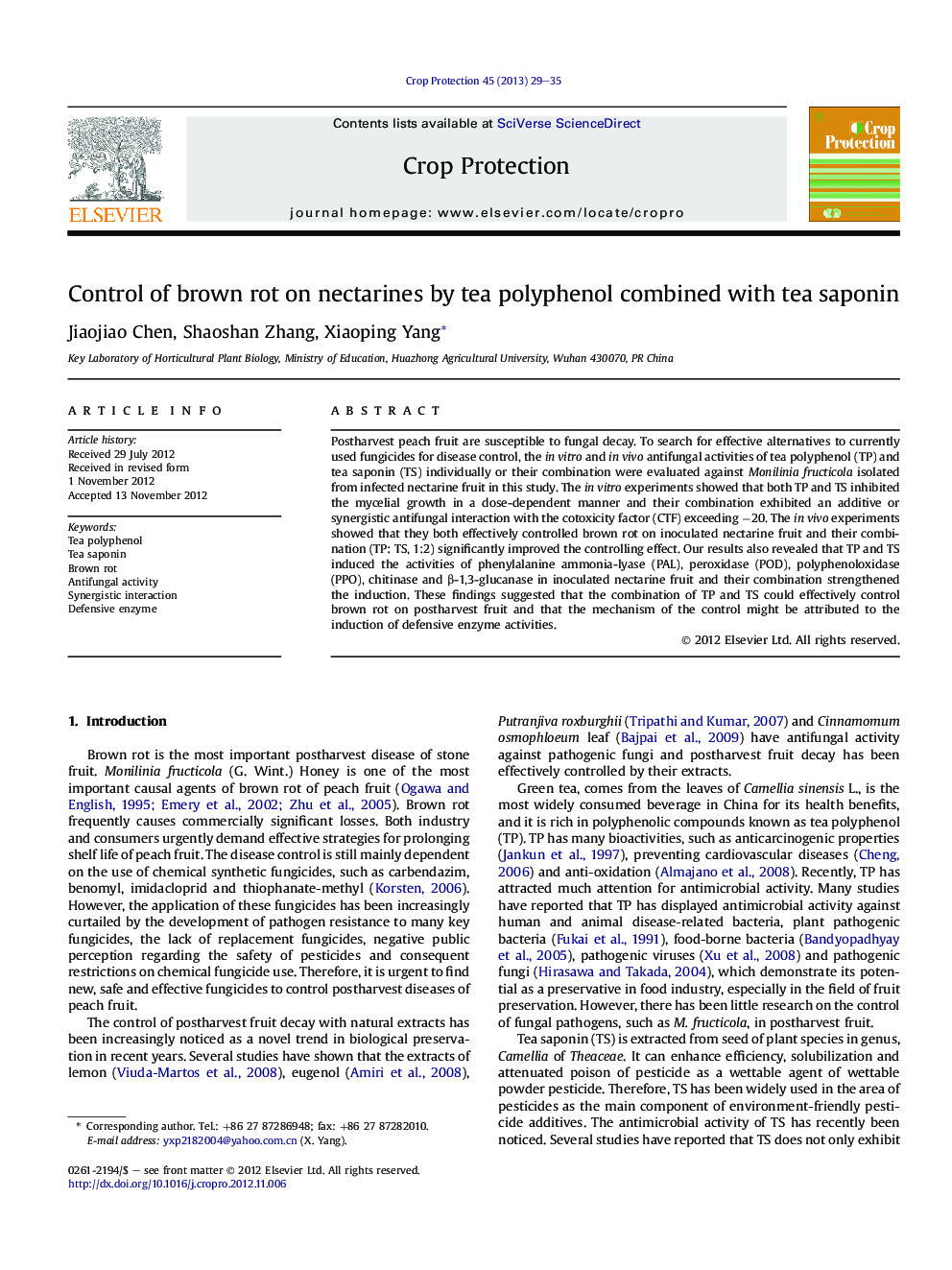| Article ID | Journal | Published Year | Pages | File Type |
|---|---|---|---|---|
| 6373869 | Crop Protection | 2013 | 7 Pages |
Postharvest peach fruit are susceptible to fungal decay. To search for effective alternatives to currently used fungicides for disease control, the in vitro and in vivo antifungal activities of tea polyphenol (TP) and tea saponin (TS) individually or their combination were evaluated against Monilinia fructicola isolated from infected nectarine fruit in this study. The in vitro experiments showed that both TP and TS inhibited the mycelial growth in a dose-dependent manner and their combination exhibited an additive or synergistic antifungal interaction with the cotoxicity factor (CTF) exceeding â20. The in vivo experiments showed that they both effectively controlled brown rot on inoculated nectarine fruit and their combination (TP: TS, 1:2) significantly improved the controlling effect. Our results also revealed that TP and TS induced the activities of phenylalanine ammonia-lyase (PAL), peroxidase (POD), polyphenoloxidase (PPO), chitinase and β-1,3-glucanase in inoculated nectarine fruit and their combination strengthened the induction. These findings suggested that the combination of TP and TS could effectively control brown rot on postharvest fruit and that the mechanism of the control might be attributed to the induction of defensive enzyme activities.
⺠Both TP and TS exhibited good antifungal activity against M. fructicola. ⺠TP combined with TS (1:2) exhibited a synergistic interaction. ⺠The mechanism might be the induction of the defensive enzyme activities.
